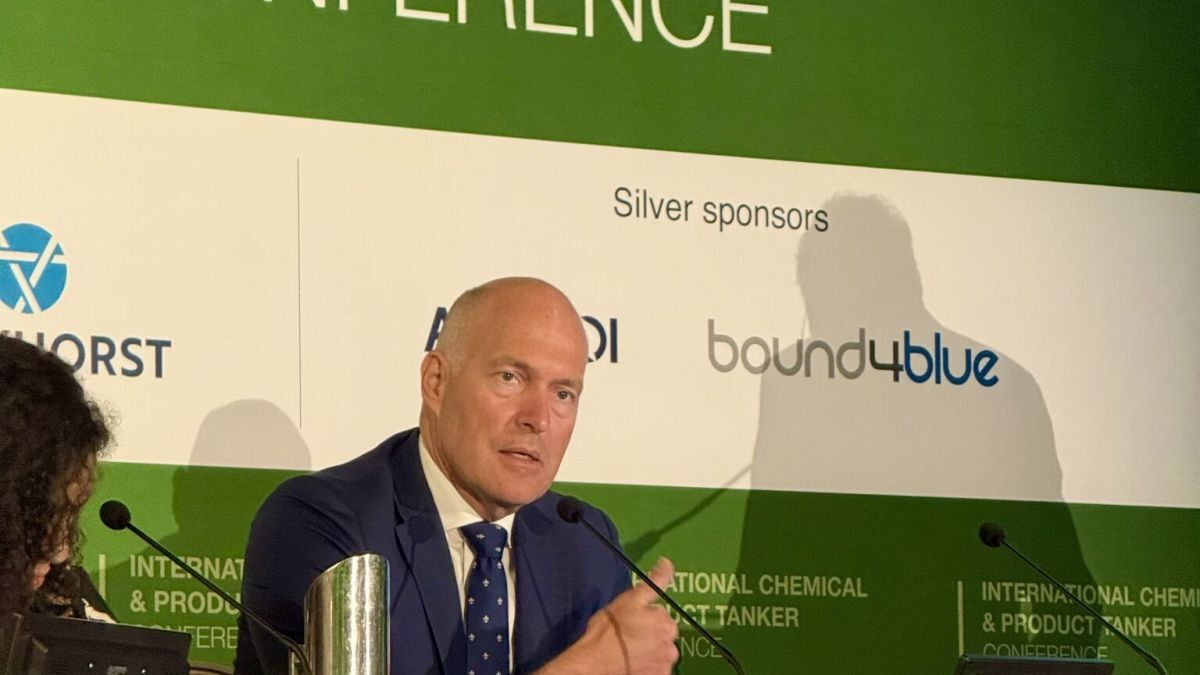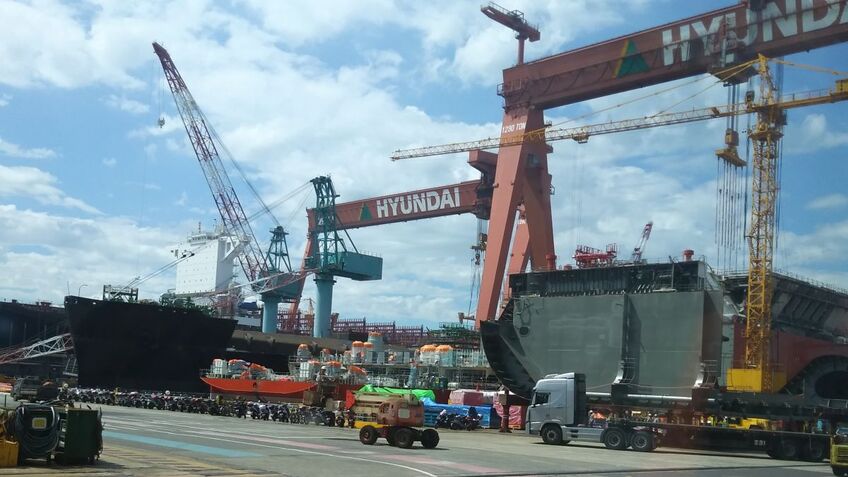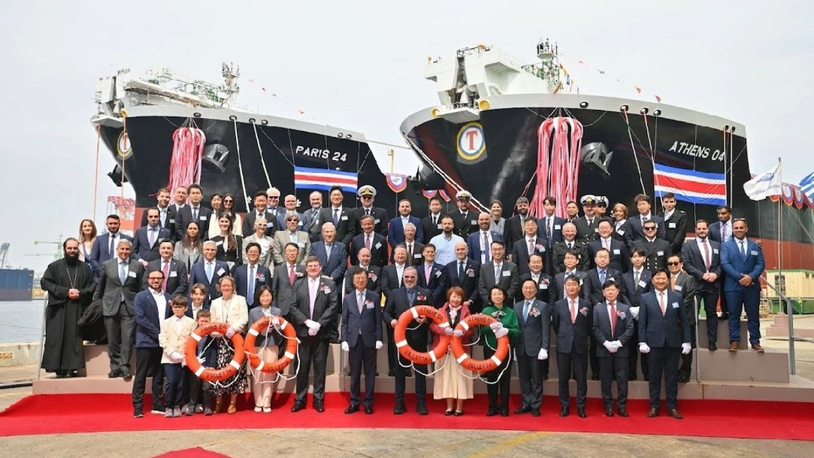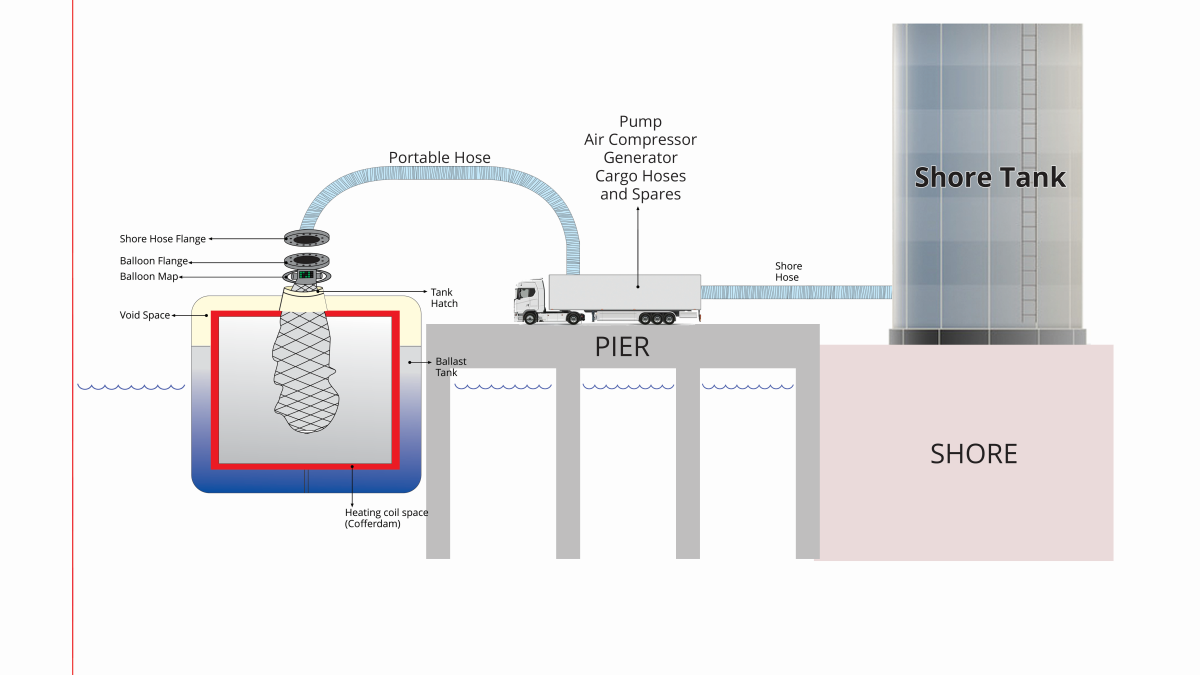Business Sectors
Events
Contents
Product tanker operations benefit from simulated training
Standardised design and a strong emphasis on simulator-based training typify product carriers in the Conti fleet
Standardised design and a strong emphasis on simulator-based training typify product carriers in the Conti fleet
The recently delivered Conti Equator is the third in a series of six product tankers on order to Hamburg-based Conti Container Schiffahrts and technically managed by Niederelbe Schiffahrtsgesellschaft (NSB). The vessels will operate in the United Product Tankers Handy Pool, which spans double hull product tanker vessels between 33,000 dwt and 40,000 dwt.
This series of vessels heralds Conti Container Schiffahrts debut in the product tanker segment, the company having previously concentrated on the container and, more recently, the LPG segments. To manage these vessels NSB has created a dedicated tanker department to service the LPG and product fleets.
The department will be swelled by a further couple of product carriers this year and another four gas carriers from the Neptun yard in Rostock over the next two years (two in 2009, two in 2010). NSB is also currently in discussion with a Korean yard regarding a further order for an ethylene carrier.
A defining characteristic of the new product tankers is a simple, standardised design, explains the vessel’s technical manager, Jan Meier. “We decided to follow this route as it both streamlines operations and maintenance. It also means that if we switch crew between vessels they will encounter the same set-up.”
Cargo, carried in six pairs of main tanks coated with Chokwang-Jotun epoxy paints, can be heated by deck-mounted Framo heat exchangers, which are supplied with steam by Aalborg boilers. Each tank (total capacity when 98 per cent full is 40,805m3) is served by a hydraulically driven Framo submerged pump: 10 of these are rated at 500 m3/h, two are rated at 300 m3/h, and two 200m3/h units serve the two slop tanks (total capacity 1,054m3).
Framo also supplied the ballast pumps, while tank monitoring level measurement is by Hanla-Auxitrol radar beam type equipment, plus a Hanla electro-pneumatic system. Damcos supplied the remote control package for the valves, which include Westad butterfly types.
Each tank is fitted with one TankTech tank cleaning machine. High velocity pressure-vacuum valves from Pres-Vac have been fitted, and to inert the spaces a KangRim inert gas generator is installed. Oriental supplied the hydraulic hose-handling crane, and Rolls-Royce provided the steering gear and an entire complement of deck machinery.
Main propulsion power is provided by a Hyundai-MAN B&W 6S46MC-C low speed engine developing 7,860kW at 129 rpm (MCR rating). Electrical power is supplied by three 730kW Hyundai alternators driven by Hyundai’s own-design HiMSEN 5H21/32 engines, and a STX-Cummins emergency unit. Conti Equator can maintain around 15.0 knots at a design draught of 9.80m, with 90 per cent MCR and a 10 per cent sea margin. Bunker capacity is approximately 1,110m3 of HFO and 188m3 of MDO.
Auxiliary machinery includes a Sauer & Sohn main air compressor, DVZ oily water seperator, Jonghap sewage treatment plant and a Boll & Kirch auto back flushing oil filter, while Hi-Air supplied the air conditioning and refrigerating system.
On the bridge, Furuno supplied the navigation and radio equipment package, as well as the automatic identification system (AIS), autopilot and gyro compass. The engineroom alarm and monitoring system as well as cargo controls were supplied by Hyundai Aconis.
Each vessel has an onboard complement of 18 crew, comprising Romanian senior officers and Filipino ratings. “Traditionally, we had crew from Russia and the Ukraine; however, today’s crewing situation has intensified competition for crew from these nations,” explains Mr Meier. “Columbia Shipmanagement – with whom NSB has worked with since 1985 across the container and LPG operations – proposed to us the use of Romanian crew.
“Initially, we were sceptical,” recalls Mr Meier; however, we decided to invite a selection to Germany for interview and put them through their paces on our state-of-the-art training simulator. We were impressed with the results and now have three vessels running with Romanian senior officers.
Simulator based training plays an important role in crew training. NSB made a conscious decision a couple of years ago to invest in this provision in order to continue to stay ahead of charter requirements and maintain a high navigational standard across our fleet.
The 270 degree bridge handling simulator that is at the heart of the NSB training academy is widely regarded as one of the most technically advanced simulators in the world. “We can replicate real situations taken from voyage data recorders and recreate some of the most hostile conditions and toughest grounding ever encountered at sea. All our offices and masters undergo training inhouse twice a year. If we find we have spare capacity we rent the facilities out to third parties,” concludes Mr Meier. TST
Related to this Story
Women in Maritime Today: Elin Saltkjel says no day working in maritime is dull
Events
Maritime Environmental Protection Webinar Week
Cyber & Vessel Security Webinar Week
The illusion of safety: what we're getting wrong about crews, tech, and fatigue
Responsible Ship Recycling Forum 2025
© 2024 Riviera Maritime Media Ltd.













